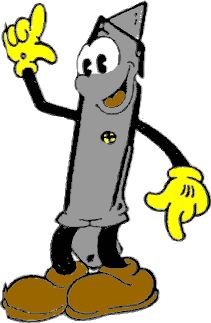Print shop equipment
Buying print shop equipment can be an awfully expensive endeavor, though it doesn't have to be. Buy used and source large equipment locally to save on shipping. Ebay is your friend (set a price alert and be patient).
Check out reviews, ratings, and forums before buying. Every machine has pros and cons, and you don't always get what you pay for. Some troubleshooting will be particular to your combination of machines, so be aware that not every hypothetical problem will be a problem for your setup. A common mistake with DIY projects is to go ultra-cheap and end up "buying twice" due to sub-par equipment choices. Consider this as well as the fact that you don't have to assemble it all overnight. Learn to be critical of sexy marketing and recognize which features aren't worth the extra money. For example, extra paper trays on a printer mean nothing without a high capacity output bin.
Price estimates here are as of January 2024. Prices can always change, and things like printer parts do become harder to source the older the model is.
Printers
Laserjet over inkjet. Hewlett Packard [HP] quality is top-notch (use generic toners instead of overpriced HP toners). Brother printers are notoriously reliable and cheap, but the quality isn't as good. What you buy depends on your anticipated volume. Buying used can be totally fine, but look at the page count roughly as you would look at the odometer on a car. The lower the better, but you can expect some printers to last longer than others.
They don't make 'em like they used to!
See printer recommendations in our equipment library.
Cutters
No table-top bullshit. Ideally, your cutter (aka guillotine) needs to be able to cut someone's head off and weigh half a ton minimum. Literally.

"If one of these is your only choice, and you are okay with occasional lopsided cuts and a 50% yield, then go for it. Make sure the blade is sharp, the screws and bolts are torqued to shit, and put some back into it!"
The level of technological advancement varies in cutters from iron age (fully manual) to probably WiFi enabled at this point. They are roughly priced accordingly, though an older one in nice condition could also cost a pretty penny because of vintage value and quality craftsmanship. However, the older ones will last forever, and almost never break, but also require a certain level of physical capability that they will then proceed to rob you of through overuse (looking at you, right shoulder!). These can also sometimes be found for cheap or free if you are willing to haul them, similar to pianos. I cannot imagine what it would cost to ship one of these, if you could even find someone to ship it.
See cutter recommendations in our equipment library.
Binders
All of our current recommendations are for perfect binders, ie hot glue binders. Like cutters, these come in manual and automated varieties. Deciding between these two types can come down to your expected volume, budget, and/or physical limitations. Magical automation isn't a solve for all your problems, however--more bells and whistles can also mean more money to burn on parts and maintenance. Off-brand manual binders are pretty solid for their price point, but they're slower. Some automated binders boast of producing ~200 books per hour, while less expensive manual types can bind roughly ~50 in the same time span.
See binder recommendations in our equipment library.
Creasers
Creasers are very simple but somehow also very imperfect machines that are necessary due to how most binders work. They're for creasing covers, to mark where to bind, and to create a cleaner spine, and sometimes (secondary creases) to make the cover open more easily. We only have experience with manual creasers. They do not vary much, just look for sturdy-looking and -feeling construction.
Alternatively, if you have access to a powered letterpress like a Chandler & Price, it is possible to set that up for creasing a large run in a short amount of time.
See creaser recommendations in our equipment library.
Paper joggers
Paper joggers are simple tabletop machines that save you the hassle of shuffling paper by hand. They jostle stacks of paper around to remove the static electricity that often exists between sheets, which helps provide a consistent edge when cutting and binding paper. They can be found used for pretty cheap and are typically reliable. Set a price alert on eBay and save yourself the papercuts.
